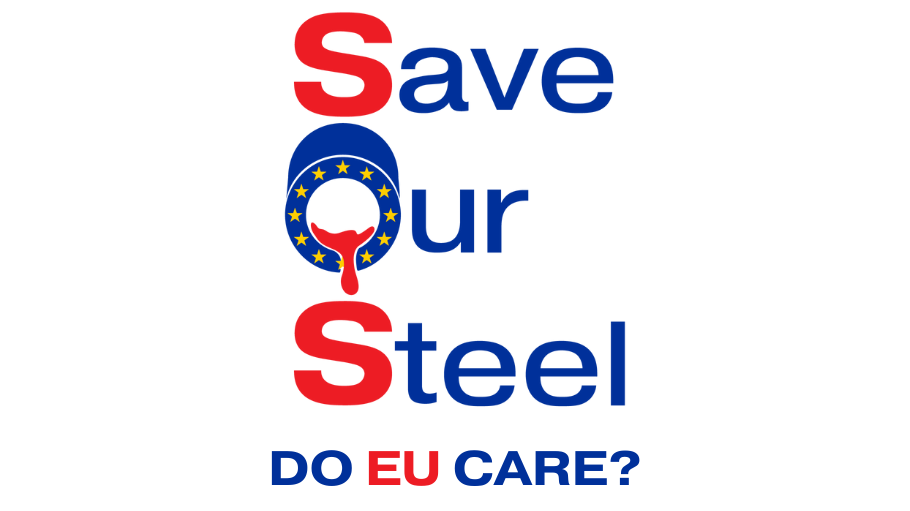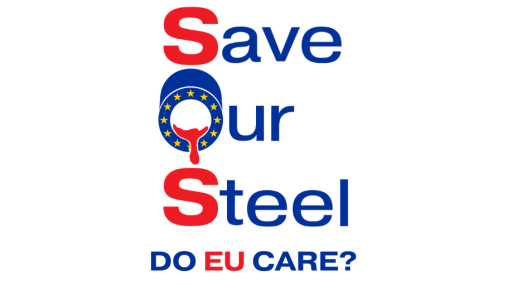
Press releases » EUROFER supports industry workers’ demonstration: EU inaction puts thousands more European steel jobs at risk
EUROFER supports industry workers’ demonstration: EU inaction puts thousands more European steel jobs at risk
Downloads and links
Recent updates

Brussels, 04 February 2025 – The European Steel Association (EUROFER) supports the demonstration of thousands of industry workers taking place tomorrow, 5 February, in Brussels, organised by industriAll Europe. Steel workers from across the EU will join workers from other manufacturing industries to call on the European Commission to save our industry and preserve employment by investing in good industrial jobs and the transition, while combating global overcapacity and unfair trade.
"Highly skilled, passionate, motivated steelworkers are the heartbeat of the European economy. But our heart is on life support. Without immediate action from the European Union, there will be more plant closures and job losses in the steel industry. Communities that rely directly and indirectly on steel, local economies that depend on it, are being abandoned by Europe’s political leaders. For every direct job in the steel sector, seven more are created in the EU’s economy: steel is at the core of many other sectors, from automotive, construction and defence to renewable energy systems and aerospace. If steel disappears from Europe, value chains and prosperity will disappear too”, said Axel Eggert, Director General of the European Steel Association (EUROFER).
Key facts highlight the severity of the crisis:
• The European steel industry provides over 300,000 direct jobs and supports more than 2.2 million indirect jobs. Nearly 100,000 steel jobs have already been lost in the past 15 years, with more cuts looming now due to unprecedented challenges.
• Global steel overcapacity is at record levels - 551 million tonnes in 2023, four times the EU steel production - and projected to increase further to about 700 million tonnes by 2026.
• EU steel production has plummeted by 34 million tonnes since 2018, falling to just 126 million tonnes in 2023. Imports now account for 27% of the EU market.
• Capacity utilisation in the EU has sunk to an unsustainable 60%. The EU is the only major region globally to have reduced steelmaking capacity over the past 15 years - by 35 million tonnes, including 9 million in 2024 alone.
“As the perilous state of our industry becomes ever more apparent, we have witnessed a ratcheting up of cross-party political support. From last week’s meeting of trade, industry, energy and research committees in the European Parliament to today’s informal EU Council meeting of Trade and Competitiveness ministers in Warsaw, there is a strong call for immediate action. The question is, will the European Commission deliver what is needed?”, asked Axel Eggert.
Following the presentation of the Competitiveness Compass, which rightly identifies the vulnerability of the European steel industry in a climate of low demand, high energy prices, and unfair competition, the European steel industry expects both the Clean Industrial Deal and the Steel and Metals Action Plan to deliver genuine solutions to longstanding challenges.
Critical measures include, as proposed in the industriAll-EUROFER European Steel Action Plan:
• Assertive enforcement of the EU trade defence instruments, and a more robust tariffication regime to stop the spill-over impact of global steel excess capacity.
• A Carbon Border Adjustment Mechanism (CBAM) that works in practice, preventing circumvention or resource shuffling and preserving EU steel exports.
• Affordable clean energy by passing the benefits of renewable and low-carbon electricity to consumers.
• Retaining steel scrap in Europe for the circular economy, decarbonisation and energy security.
“The initiatives to be put forward by the Commission over the next weeks will determine the life expectancy of the European steel industry, and with it, European manufacturing, Europe’s competitiveness, and Europe’s security. Save Our Steel!”, concluded Mr Eggert.
Contact
Lucia Sali, Spokesperson and Head of Communications, +32 2 738 79 35, (l.sali@eurofer.eu)
About the European Steel Association (EUROFER)
EUROFER AISBL is located in Brussels and was founded in 1976. It represents the entirety of steel production in the European Union. EUROFER members are steel companies and national steel federations throughout the EU. The major steel companies and national steel federation of Turkey, Ukraine and the United Kingdom are associate members.
The European Steel Association is recorded in the EU transparency register: 93038071152-83.
About the European steel industry
The European steel industry is a world leader in innovation and environmental sustainability. It has a turnover of around €191 billion and directly employs around 303,000 highly-skilled people, producing on average 140 million tonnes of steel per year. More than 500 steel production sites across 22 EU Member States provide direct and indirect employment to millions more European citizens. Closely integrated with Europe’s manufacturing and construction industries, steel is the backbone for development, growth and employment in Europe.
Steel is the most versatile industrial material in the world. The thousands of different grades and types of steel developed by the industry make the modern world possible. Steel is 100% recyclable and therefore is a fundamental part of the circular economy. As a basic engineering material, steel is also an essential factor in the development and deployment of innovative, CO2-mitigating technologies, improving resource efficiency and fostering sustainable development in Europe.

Strasbourg, 17 December 2025 – The European Commission’s latest proposals on the Carbon Border Adjustment Mechanism (CBAM), unveiled today, correctly identify several loopholes that risk undermining its effectiveness, notably regarding EU exports, downstream sectors and circumvention practices. However, despite these laudable efforts, the measures put forward fail to deliver a comprehensive and durable response to carbon and jobs leakage, warns the European Steel Association (EUROFER).
A milestone occasion to quickly and effectively restore affordable electricity, to relaunch the
decarbonization and strengthen the international competitiveness of the European steel
industry.
Brussels, 02 December 2025 – Unchanged negative conditions – U.S. tariffs and trade disruptions, economic and geopolitical tensions, protracted weak demand and still high energy prices – continue to weigh on the European steel market. EUROFER’s latest Economic and Steel Market Outlook confirms for 2025 another recession in both apparent steel consumption (-0.2%, unchanged) and steel-using sectors (-0.5%, revised from -0.7%). A potential recovery is expected only in 2026 for the Steel Weighted Industrial Production index (SWIP) (+1.8%, stable) and for apparent steel consumption (+3%, slightly revised from +3.1%) – although consumption volumes would still remain well below pre-pandemic levels. Steel imports retained historically high shares (27%), while exports plummeted (-9%) in the first eight months of 2025.